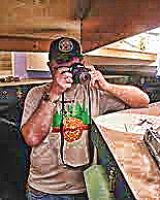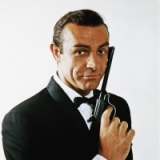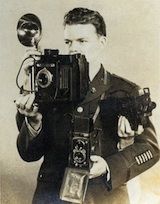- Forum
- General Discussion | Introductions | Off Topic Forum
- Photography General Discussion
- 50mm is suppose to be like our natural vision?
50mm is suppose to be like our natural vision?
-
 Topic Author
Topic Author
- Moossmann
- Photography Hooked
-
- Nikon D850 and Sony a6500
- Followers: 132
- Posts: 861
-
Points:
3524
-

- Henry Peach
- Apprentice
-
- I currently use a 5DII or Sony Nex-3 most of the time.
- Followers: 50
- Posts: 2925
-
Points:
16
Post #132094
-

- KCook
- Photo Elder
-
- Canon EOS 50D and Olympus E-P5
- Followers: 1325
- Posts: 5410
-
Points:
32913
Post #132147
www.dcolegrovephotography.com/photonews/...-focal-lenth-lenses/
Kelly Cook
-

- Scotty
- Agent 007
- James Bond, PT mod.
- Followers: 1088
- Posts: 9904
-
Points:
15353
-

- Baydream
- Moderator
-
- Canoni/60D/70D/5DmkIII
- Followers: 388
- Posts: 11185
-
Points:
7280
Post #132179
Shoot, learn and share. It will make you a better photographer.
fineartamerica.com/profiles/john-g-schickler.html?tab=artwork
-

- Henry Peach
- Apprentice
-
- I currently use a 5DII or Sony Nex-3 most of the time.
- Followers: 50
- Posts: 2925
-
Points:
16
Post #132265
Baydream wrote: If "normal" is looking through a rectangular hole on a wall.
"I've finally figured out what's wrong with photography. It's a one-eyed man looking through a little hole. Now, how much reality can there be in that?" -David Hockney
-

- Henry Peach
- Apprentice
-
- I currently use a 5DII or Sony Nex-3 most of the time.
- Followers: 50
- Posts: 2925
-
Points:
16
Post #132268
Visual Acuity and Resolving Detail on Prints
How many megapixels equivalent does the eye have?
The Sensitivity of the Human Eye (ISO Equivalent)
The Dynamic Range of the Eye
The Focal Length of the Eye
clarkvision.com/articles/human-eye/index.html
Digital cameras vs the human eye
www.cambridgeincolour.com/tutorials/cameras-vs-human-eye.htm
-

- MLKstudios
- Banned
-
- D800 ;-)
- Followers: 72
- Posts: 4480
-
Points:
2
Post #132271
The normal is defined by the format. For Canon APS chipped cameras it is close to 30mm and Nikon DX, closer to 35mm (due to the crop differences).
Any lens NOT normal has distortion. Wide angle distortion is compared to looking out a peep hole. It tends to bend the edge lines outward, and makes close things look larger than they would look to us.
Telephoto distortion (known as telephoto compression) is often seen as a positive, as it makes a more pleasing portrait. Due more to how far away we have to shoot to frame a headshot with a telephoto.
The normal focal length equals the diagonal measurement of the format. That's because it takes a circle that size to cover it. Or a 1:1 ratio of the focal length to the image circle required for the format.
Matthew
Matthew L Kees
MLK Studios Photography School
www.MLKstudios.com
[email protected]
"Every artist, was once an amateur"
-

- KCook
- Photo Elder
-
- Canon EOS 50D and Olympus E-P5
- Followers: 1325
- Posts: 5410
-
Points:
32913
Post #132320
Distortion is a function of lens design, not focal length. Modern camera lenses are not pinhole devices, instead they use a compound design. Lack of distortion, in a compound lens, is due to the designer carefully setting up the various lens elements to correct for distortion. This is just as true for "normal" focal length lenses as it is for wide angle and telephoto. Here is a shot with a 10mm lens (dial in 1.6x crop factor if you want) with very mild distortion -
Had the designer not cared about distortion, it would have had lots of distortion. The very same thing is true for "normal" lenses. There really isn't anything magic about the normal focal length, except that it happens to be more useful for more people.
Kelly
-

- Studio Queen
- Moderator
-
- Canon 50D
- Followers: 182
- Posts: 491
-
Points:
26748
Post #132475
Henry Peach wrote:
Baydream wrote: If "normal" is looking through a rectangular hole on a wall.
"I've finally figured out what's wrong with photography. It's a one-eyed man looking through a little hole. Now, how much reality can there be in that?" -David Hockney
I've not heard that quote before. It's true! Might I change it to optionally include "It's a one-eye woman looking..."
- Forum
- General Discussion | Introductions | Off Topic Forum
- Photography General Discussion
- 50mm is suppose to be like our natural vision?
Latest Reviews
The Olympus Pen E-P7 is an affordable micro four thirds mirrorless camera with 4K video capabilities, a 20.3MP sensor, and 121 focus points, making it a solid entry-level camera for beginners.
The Panasonic G9 II is a 25.2-megapixel micro four thirds camera with numerous features that make it punch out of its weight class, like 779 AF points, 5.8K video, and weather sealing.
The Fujifilm XT5 is a 40MP mirrorless camera capable of 6.2K video at 30p. With those specs, it’s an ideal choice for photographers needing a camera to pull double duty for imaging and video.
The Canon EOS R100 is an entry-level mirrorless camera introduced in 2023. But just because it’s an entry-level camera doesn’t mean it’s a bare-bones camera. Find out why in this review!
Forum Top Posters
-
1Scotty 6 posts
-
2Sanford 5 posts
-
3Rob Conley 3 posts
-
4CM88 3 posts
-
5TCav 3 posts
-
6ThatNikonG... 2 posts
-
7Brody Kross 2 posts
-
8Eric A 2 posts
-
9Ian Stone 2 posts
-
10Arthurvon 2 posts
Latest Articles
Some bird photography gear is obvious. You need a camera, a lens, and a tripod. But what are the best options in these and other categories of gear? Let’s find out!
Having a zoom lens in your bag is like having a jack of all trades. These lenses cover broad focal ranges so you can use one lens for multiple photographic pursuits.
Capturing beautiful portraits requires an understanding of compositional techniques (and a lot of other things). In this guide, learn how to master low-angle portrait composition for beautiful results!
Tree photography is an interesting genre of landscapes that use the size, shape, and texture of trees as the primary element of interest. With these quick tips, you can master the art of photographing trees!
Auto white balance is a camera setting that adjusts the color temperature of your images automatically. It often works well, but you should know a few tips to fix problems it might cause, too.
The Canon EOS 5D Mark III might be more than a decade old, but it still has the chops to be a quality camera for photographers in 2024.
Starting a photography business can be a daunting task. There is a lot to do, and many mistakes can be made. This guide helps you minimize mistakes and maximize your success!
The Canon 6D Mark II might be an older DSLR, but that doesn’t mean it isn’t a good option for 2024. In fact, this budget-friendly camera is a powerhouse for stills and videos.
















